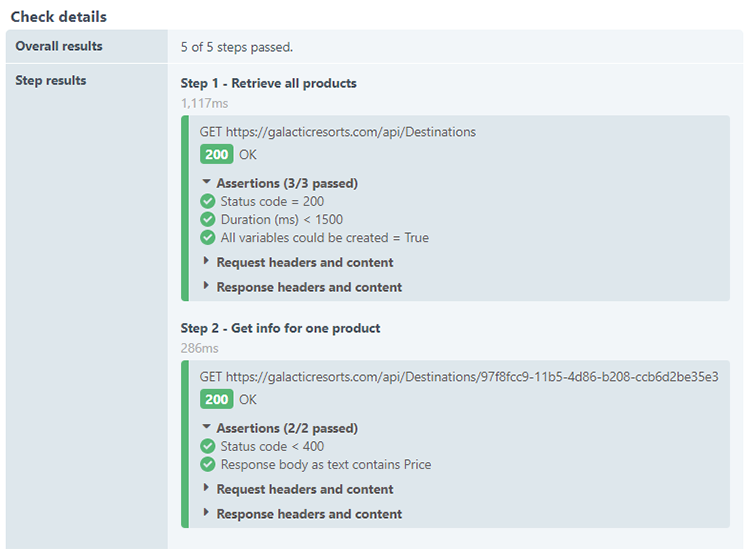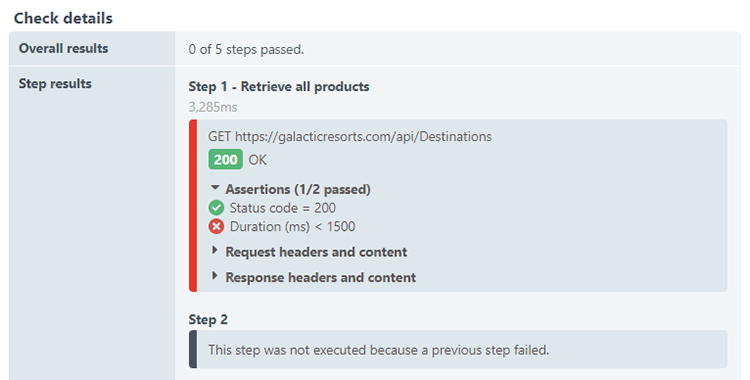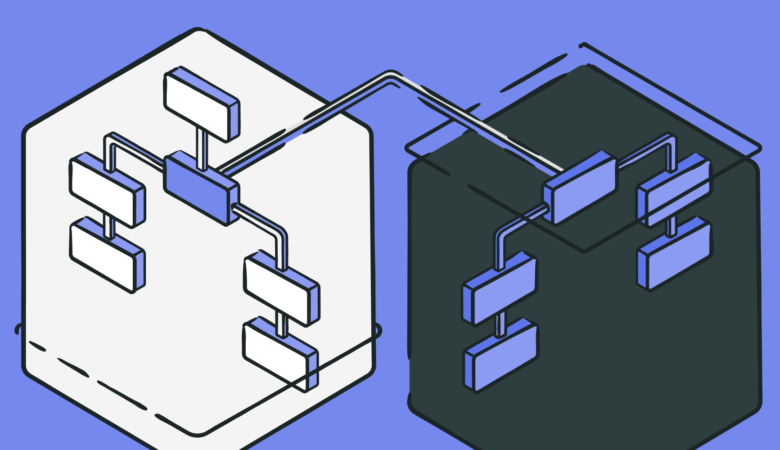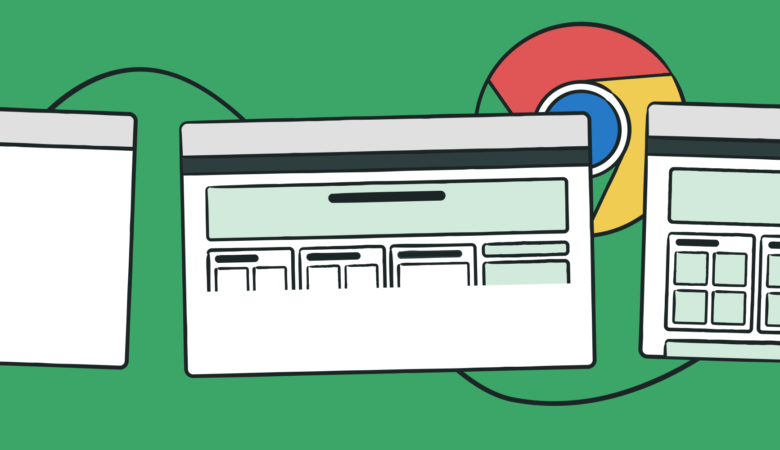Uptime is great, but knowing that the APIs you and your customers rely on are functioning and performing well is a great burden off your shoulders. Our new Multi-step API Monitor gives you all the control you need to test for uptime, performance, and function of your API. Using our new Multi-step API Monitor, you can test everything from redirects and authentication, to sequenced API calls that require the reuse of variables pulled from the previous API responses.
We’ve kept our new Multi-step API Monitoring on the hush-hush, but we have been working with some Uptrends users to build and refine the monitor for some time now. The monitor type has had plenty of time to mature into a stable, fully realized product, and we’ve made it available to Business and Enterprise account holders during its final phase of beta testing. The new monitor type is an option in your Uptrends account now, so no need to send a request for access. We fully support Multi-step API Monitoring, and we have extensive documentation to help you get started.
Multi-step API Monitoring starts with a single step
With Multi-step API Monitoring, you get rich, detailed data about the function and performance of your API from beginning to end starting with a single step. Our step builder makes it easy for just about anyone to set up an API monitor with little to no coding required.
First, build your request.
- Specify the method and URL, e.g., Get https://your.api.com/
- Specify any required headers, e.g., name/value pairs such as UserId/myuser@myapi.com
When that’s set up, you define what needs to happen with the response. Do things like:
- Add assertions to check status codes, response time, or specific content.
- Pull values from the response body and assign them to variables used in later steps.
Once you have that first step, you can stop there, or continue to add steps until you’ve completed an entire sequence of API calls (see Figure 1). You can also predefine variables that you can use across all the steps.

Figure 1. Multi-step API Monitoring Step Builder
The power of assertions and variables
With each response, you can set up as many assertions as you would like. You can check the response header for status codes and description, duration, content size, cookies, and more, and you can check the response body content using JSON, XPath, and regular expressions (learn more). Once you’ve defined how Uptrends should extract the value, you can choose your comparison operators. Get the full scoop on assertions in our Knowledge Base.
You can also define variables and set up predefined variables. The predefined variables make it easy to reuse the same values like domain names, user ids, and passwords. Use JSON, XPath, or regular expressions (just like with assertions) to extract values from the response for use in the later steps. Learn more about using variables in our Knowledge Base.
API reports
Your API Monitoring Check Details give you a step-by-step account of the entire API transaction. Along with the status code, total time, step duration, a full list of assertions made, and the complete request and response headers with the content (see Figure 2). When a step fails, you get all of the details too (see Figure 3). Of course, our alerting system will tell you immediately when your API is in trouble.

Figure 2. Multi-step API Monitoring Check Detail

Figure 3. Multi-step API Monitoring Check Detail with API error
How is Multi-step API Monitoring different from our regular Webservice monitor?
We’ve had our HTTP and HTTPS Webservice monitors, well, forever. So why did we add Multi-step API Monitoring? Well, our Webservice monitors work great when checking for uptime, verifying responses, and content checks, and that’s all great until you need to:
- Authenticate the user before you can make the API call.
- Use complex OAuth authentication scenarios.
- Test sequential steps with values pulled from the previous response.
- Inspect redirects before following them.
You have full control over the request content, to make assertions on the returned content, and to pull values and assign them to variables for later steps.
What does it cost?
Right now, each step you add to a Multi-step API monitor counts as one (basic) monitor. For example, if you create a setup with three steps (which means we’ll execute three HTTP requests), that API monitor will count as three basic monitors. Please make sure you have enough monitors available in your account. Please also be aware that the cost structure of API monitoring is subject to change. We will actively inform you about any pricing updates. For the complete terms of use during the public beta release of Multi-step API Monitoring, please see the article in our Knowledge Base.
Add a Multi-step API monitor today
If you’re on the Business or Enterprise plan, you can add a new multi-step API monitor right now. Feel free to connect with your personal monitoring consultant (how about a demo?) or one of our support heroes if you need help. Our Knowledge Base has a comprehensive set of documentation to get you started.
After you’ve tried out Multi-Step API Monitoring, we would love to hear from you to find out how it is working for you, and of course, if you run into issues or need help with setup, we want to hear from you about that as well!





Leave a Reply